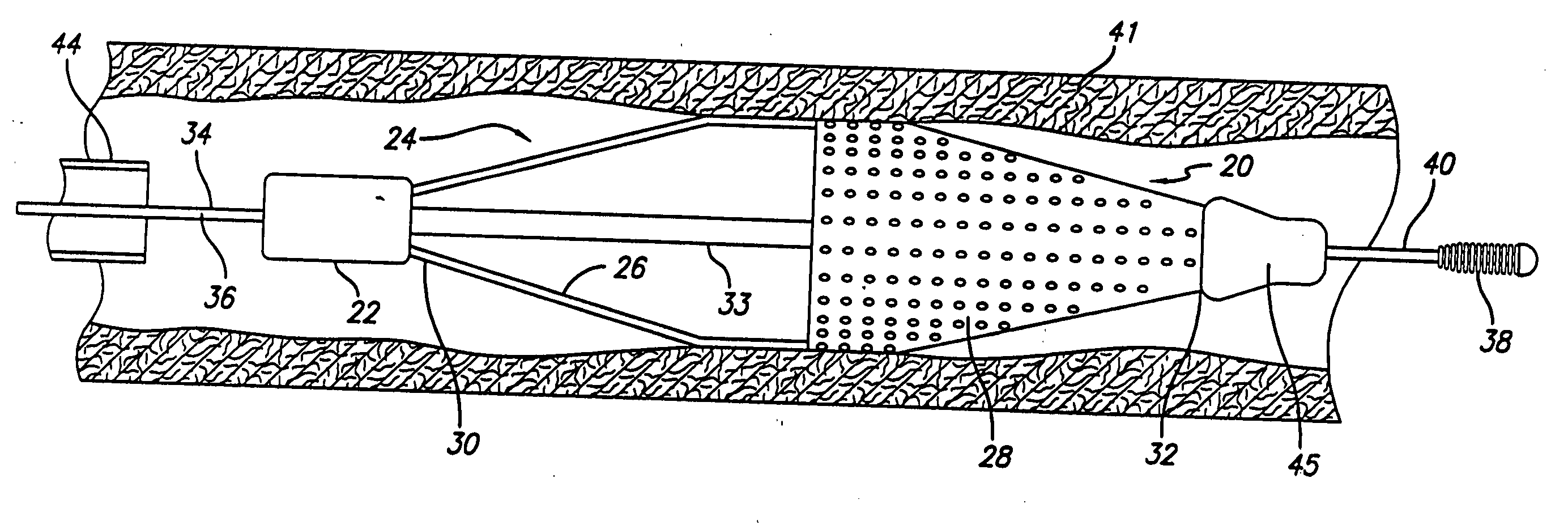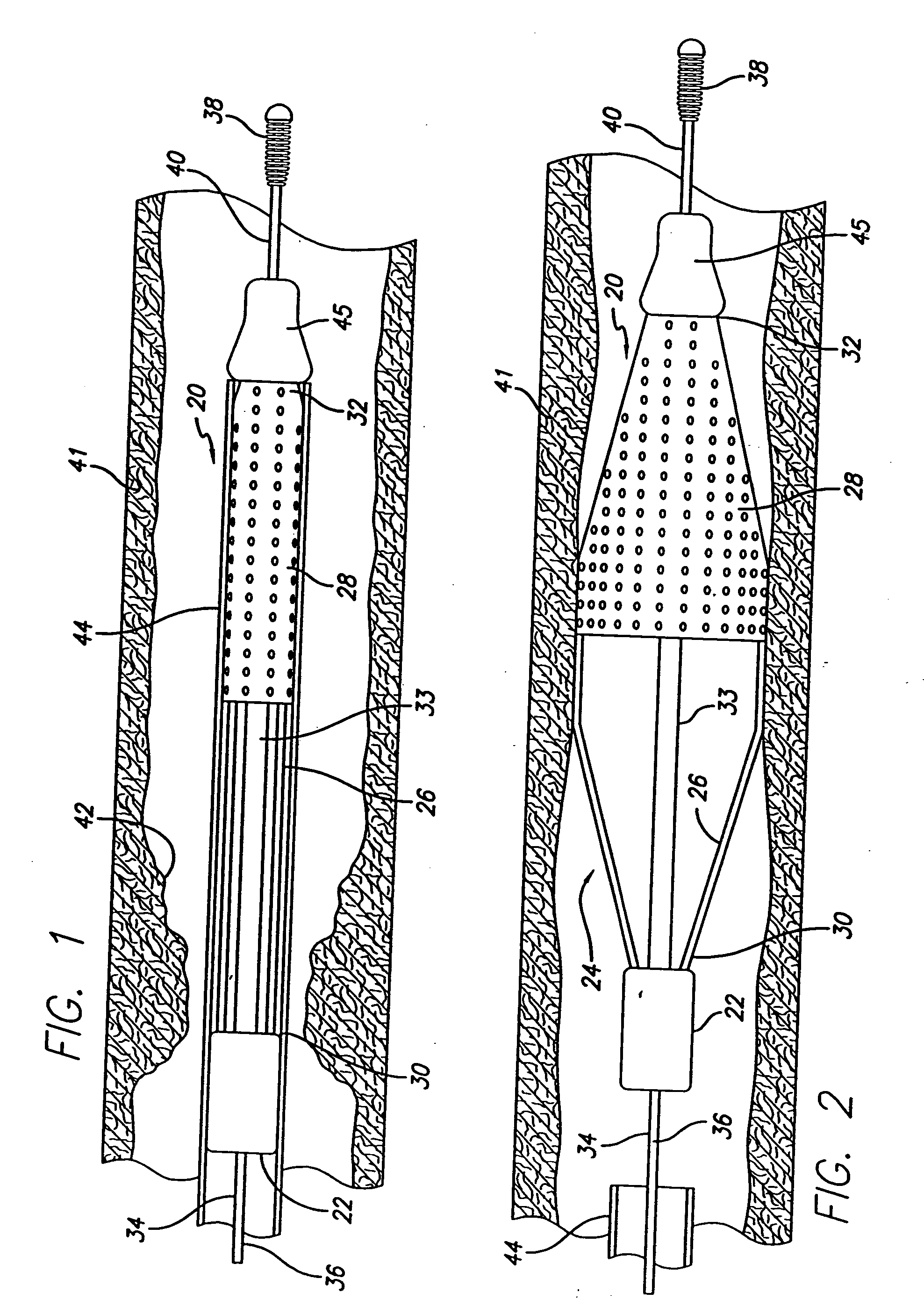Locking component for an embolic filter assembly
a technology of locking component and embolic filter, which is applied in the field of medical devices, can solve the problems of significant health problems of patients, particles that cannot be fully vaporized and entered the bloodstream, and emboli can be released into the circulatory system, and can be extremely dangerous and sometimes fatal to patients
- Summary
- Abstract
- Description
- Claims
- Application Information
AI Technical Summary
Benefits of technology
Problems solved by technology
Method used
Image
Examples
Embodiment Construction
[0051] The present invention relates to a locking component used to lock a medical device on to a standard guide wire. As such, the locking component does not need to be used with a specially designed guide wire having a complementary “fitting” or “stop” thereon in order to accomplish the locking function. That is, such a standard guide wire has no “fitting” or “stop” defined as any structure formed on the wire or attached thereto before sterilization, whose position relative to the wire is generally stationary or has very restricted linear and / or rotational movement, that is intended to engage a mating locking component of a filtering device or like medical device in order to (a) prevent or limit the movement of that filter device along the guide wire, and / or to (b) assist in the deployment of the filter device.
[0052] The above definition of a “fitting” or “stop,” however, does not encompass common fixtures found on a guide wire core such as a tip coil, a shaping ribbon, or the li...
PUM
 Login to View More
Login to View More Abstract
Description
Claims
Application Information
 Login to View More
Login to View More - R&D
- Intellectual Property
- Life Sciences
- Materials
- Tech Scout
- Unparalleled Data Quality
- Higher Quality Content
- 60% Fewer Hallucinations
Browse by: Latest US Patents, China's latest patents, Technical Efficacy Thesaurus, Application Domain, Technology Topic, Popular Technical Reports.
© 2025 PatSnap. All rights reserved.Legal|Privacy policy|Modern Slavery Act Transparency Statement|Sitemap|About US| Contact US: help@patsnap.com



